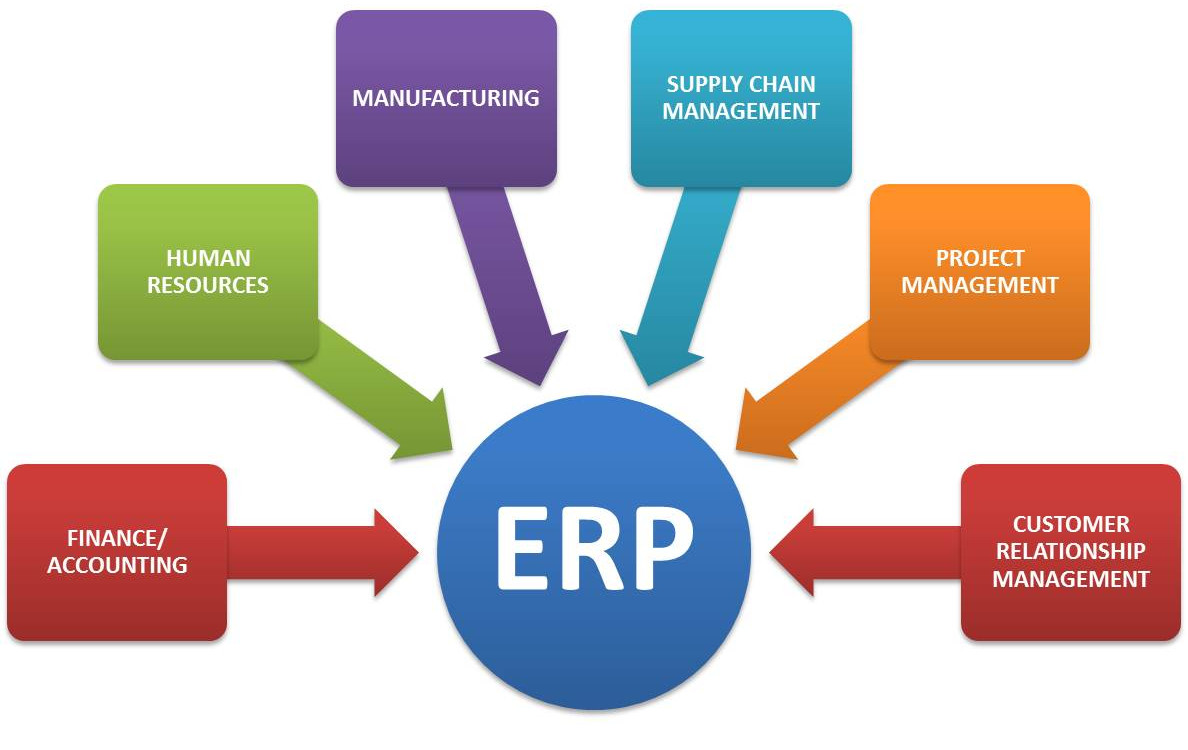Enterprise resource planning is business process management software that allows an organization to use a system of integrated applications to manage the business and automate back office functions. ERP software integrates all facets of an operation, including product planning, development, manufacturing processes, sales and marketing.

ERP software typically consists of multiple enterprise software modules that are individually purchased, based on what best meets the specific needs and technical capabilities of the organization. Each ERP module is focused on one area of business processes, such as product development or marketing. A busines scan use ERP software to manage back-office activities.
Accounting : Accounting is the preparation and analysis of financial records, such as income statements, balance sheets, and cash flows. Accountants use the data collected and recorded by bookkeepers to assess the financial health of a company, to prepare a company's tax forms, and to help the business's functions, such as marketing and IT, decide how much money to spend on the items they need, such as advertising and computer equipment. ERP is designed to help businesses accurately record financial transactions, such as sales and expenses, so they know exactly how much money is coming into and going out of the business. It supports the bookkeeping, accounting, and finance functions of a small business by making it easy to record transactions and to produce accurate financial reports.
Project Management : Project management tool has the capacity to help plan, organize, and manage resource pools and develop resource estimates. Depending on the sophistication of the software, it can manage estimation and planning, scheduling, cost control and budget management, resource allocation, collaboration software, communication, decision-making, quality management and documentation or administration systems. It provides information to various people or stakeholders, and can be used to measure and justify the level of effort required to complete the project(s). This tool provides
Supply Chain Management : Supply Chain Management focuses on all of the integrated aspects which are contained in the entire supply chain from the first supplier to the end customer and it aims to integrate all key business processes throughout the entire supply chain. It revolves around efficient integration of suppliers, manufacturers, warehouses, and stores, it encompasses the firm’s activities at many levels, from the strategic level through the tactical to the operational level. The primary objectives are